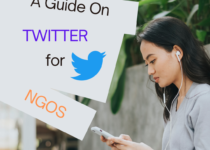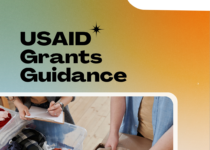Guide to Crafting an Effective Government Proposal: Writing Tips and Strategies for NGOs
Introduction: Guide to Crafting an Effective Government Proposal, your doorway to winning proposal, in the realm of competitive procurement, a well-crafted proposal is the key to unlocking opportunities and securing government contracts. Whether you’re a seasoned contractor or a newcomer to the government bidding process, this guide is designed to equip you with invaluable insights, writing tips, and proven strategies. Navigating the intricacies of government procurement requires more than technical know-how; it demands a strategic approach to proposal development.
Join us as we delve into the essential components, best practices, and expert advice to empower you in presenting compelling proposals that stand out in the highly competitive government marketplace. Whether your goal is to win your first contract or enhance your success rate, this guide is your roadmap to mastering the art of crafting proposals that resonate with government agencies.
Let’s go on board together on this journey to elevate your proposal writing skills and maximize your chances of success in the dynamic world of government procurement.
Understanding the Basics (Guide to Crafting an Effective Government Proposal)
- Definition and Purpose of a Government Proposal
A government proposal is a formal document submitted by a business or individual in response to a request for proposal (RFP) issued by a government agency. The primary purpose of a government proposal is to present a detailed plan, solution, or offer that addresses the specific needs outlined in the RFP. These proposals serve as a crucial tool in the government procurement process, allowing agencies to evaluate and compare potential vendors or contractors.
The proposal should not only demonstrate a clear understanding of the requirements outlined by the government but also showcase the bidder’s qualifications, capabilities, and unique value proposition. Effectively, the proposal acts as a persuasive document, aiming to convince the government agency that the submitting entity is the best-suited candidate to fulfill the contract. Crafting a compelling and well-structured proposal is essential for success in the competitive landscape of government contracting. In the following sections, we will explore key strategies and tips to help you master the art of writing effective government proposals.
Types of Government Proposals
Government proposals come in various types, each tailored to specific procurement scenarios and requirements. Understanding these different types is crucial for crafting a targeted and effective proposal. Here are some common types of government proposals:
- Invitation for Bid (IFB): Also known as sealed bidding, IFBs are used for straightforward procurement where the government outlines precise specifications, and bidders submit sealed bids. The contract is typically awarded to the lowest responsive and responsible bidder.
- Request for Proposal (RFP): RFPs are more complex and allow for negotiations. They are suitable for projects where the government seeks detailed solutions, often involving a combination of cost, technical, and management factors.
- Request for Quotation (RFQ): RFQs are used when the government needs pricing for standard goods or services. Bidders provide quotes, and the contract is usually awarded to the lowest-priced, technically acceptable offer.
- Letter of Interest (LOI) or Inquiry (LOI): Sometimes, the government issues an LOI or LOI to gauge interest and gather information about potential bidders before releasing a formal RFP.
- Unsolicited Proposal: In some cases, businesses can submit proposals proactively, without a formal request. These unsolicited proposals present innovative ideas or solutions that could benefit the government.
Understanding the specific type of proposal being requested is essential for tailoring your response to meet the government’s expectations and requirements. In the upcoming sections, we will delve into strategies for effectively addressing each type of proposal.
Key Components of a Government Proposal
Effectively composing a government proposal requires careful attention to key components that convey your understanding of the project, your capabilities, and the value you bring to the government’s needs. Here are the crucial components of a government proposal:
- Executive Summary:
- Provide a concise overview of your proposal, highlighting key points.
- Summarize your understanding of the government’s requirements and your proposed solution.
- Introduction:
- Introduce your company, emphasizing relevant experience and expertise.
- Clearly state the purpose of your proposal and your interest in the project.
- Project Understanding:
- Demonstrate a thorough understanding of the government’s needs and objectives.
- Showcase your insights into the project’s intricacies and challenges.
- Technical Approach:
- Outline your proposed solution in detail, addressing all technical aspects.
- Clearly explain how your approach meets or exceeds the specified requirements.
- Management Plan:
- Present a detailed plan for project management, including timelines and milestones.
- Showcase your team’s qualifications and experience relevant to the project.
- Past Performance:
- Highlight your company’s relevant past performance and successful projects.
- Provide references and case studies that demonstrate your capability to deliver.
- Cost Proposal:
- Clearly outline all costs associated with your proposal.
- Ensure transparency and accuracy in your cost estimates.
- Compliance and Risk Mitigation:
- Address how your proposal complies with all the requirements laid out in the government’s request.
- Identify potential risks and outline strategies for risk mitigation.
- Quality Control Measures:
- Detail your quality control processes to ensure the government receives a high-quality deliverable.
- Highlight any relevant certifications or quality assurance practices.
- Conclusion:
- Summarize key points and restate your commitment to delivering value.
- Include any additional information that reinforces your proposal’s strength.
By meticulously addressing these components, you enhance your chances of creating a compelling and comprehensive government proposal. In the subsequent sections, we will explore specific writing tips and strategies for each component to elevate the quality of your proposal.
Preparing for Proposal Writing (Guide to Crafting an Effective Government Proposal)
There are key steps that’s needs to be followed in order to nail the Government Proposal
Researching Government Requirements
Before diving into the intricate process of crafting a government proposal, thorough research of the government’s requirements is paramount. This initial step sets the foundation for a targeted and responsive proposal. Here are key aspects to consider when researching government requirements:
- Request for Proposal (RFP) Analysis:
- Carefully examine the RFP document provided by the government agency.
- Identify and understand the specific needs, objectives, and evaluation criteria outlined in the RFP.
- Stakeholder Engagement:
- Engage with key stakeholders from the government agency to clarify any ambiguities in the RFP.
- Seek additional information or insights that may not be explicitly stated in the document.
- Understanding Project Goals:
- Clearly define the goals and outcomes the government aims to achieve with the project.
- Align your understanding with the broader objectives of the government agency.
- Compliance Requirements:
- Identify all compliance requirements and standards specified in the RFP.
- Ensure that your proposal clearly addresses each compliance element.
- Budget Considerations:
- Analyze the budget constraints and considerations mentioned in the RFP.
- Tailor your proposal to provide cost-effective solutions within the specified budget.
- Timeline and Milestones:
- Grasp the project timeline and milestones indicated in the RFP.
- Develop a realistic schedule in your proposal that aligns with the government’s expectations.
- Evaluation Criteria:
- Understand how the government agency plans to evaluate proposals.
- Align your proposal with the specified evaluation criteria to enhance its competitiveness.
- Legal and Regulatory Landscape:
- Familiarize yourself with relevant legal and regulatory requirements.
- Ensure that your proposal adheres to all applicable laws and regulations.
- Competitor Analysis:
- Research potential competitors and their approach to similar government projects.
- Identify unique value propositions that set your proposal apart.
- Risk Assessment:
- Conduct a thorough risk assessment related to the project.
- Address potential challenges and risks in your proposal, demonstrating a proactive approach.
By investing time and effort in comprehensive research, you position yourself to create a proposal that not only meets but exceeds the expectations of the government agency. In the subsequent sections, we will delve into strategies for incorporating your research findings effectively into the various components of your proposal.
Understanding Evaluation Criteria
Understanding the evaluation criteria is paramount to crafting a winning government proposal. Government agencies use a systematic approach to assess and score proposals based on specific criteria. Here’s a comprehensive guide to understanding the evaluation criteria:
- Read RFP Thoroughly:
- Begin by carefully reading the Request for Proposal (RFP) or solicitation documents.
- Highlight and understand the evaluation criteria section.
- Identify Key Criteria:
- Determine the primary factors that the government agency considers during the evaluation process.
- Common criteria include technical approach, past performance, cost, and compliance with specifications.
- Weighted Criteria:
- Some criteria may carry more weight in the evaluation process.
- Pay attention to any indications of the relative importance of each criterion.
- Evaluation Factors:
- Understand the specific elements within each criterion that evaluators will assess.
- For instance, technical approach may include innovation, methodology, or compliance with requirements.
- Compliance and Responsiveness:
- Ensure that your proposal fully complies with the requirements outlined in the RFP.
- Address all mandatory criteria and demonstrate responsiveness to the agency’s needs.
- Quality of Past Performance:
- Emphasize your organization’s track record and relevant past performance.
- Provide evidence of successful completion of similar projects, customer satisfaction, and adherence to timelines.
- Technical Approach:
- Clearly articulate your technical approach to addressing the agency’s needs.
- Highlight any innovative methods, technologies, or strategies that set your proposal apart.
- Personnel Qualifications:
- Demonstrate the qualifications and expertise of key personnel assigned to the project.
- Provide resumes, certifications, and relevant experience to instill confidence in your team.
- Cost Considerations:
- Develop a comprehensive and competitive cost proposal.
- Clearly outline all cost elements and ensure alignment with the agency’s budget constraints.
- Risk Mitigation:
- Address potential risks associated with your proposal and demonstrate proactive mitigation strategies.
- Agencies appreciate proposals that acknowledge and manage risks effectively.
- Innovation and Added Value:
- Showcase any innovative features or added value your proposal brings.
- Illustrate how your solution goes beyond meeting basic requirements.
- Clarity and Organization:
- Present your proposal in a clear, well-organized manner.
- Use headings, bullet points, and visuals to enhance readability and understanding.
- Adherence to Formatting Guidelines:
- Follow formatting guidelines provided in the RFP.
- Non-compliance with formatting requirements may result in proposal rejection.
Understanding and addressing each evaluation criterion with precision increases the likelihood of your proposal receiving favorable consideration. Tailor your responses to align seamlessly with the agency’s priorities and evaluation process. The subsequent sections of this guide will delve into strategies for effectively addressing these criteria in your proposal.
Writing Tips for Government Proposals (Guide to Crafting an Effective Government Proposal)
Clarity and Conciseness
In the territory of government proposals, clarity and conciseness are indispensable attributes that can significantly impact the success of your bid. Consider the following writing tips to enhance the clarity and conciseness of your proposal:
- Precision in Language:
- Use clear and precise language to convey your ideas.
- Avoid unnecessary jargon or overly complex sentences that may confuse the reader.
- Strategic Formatting:
- Utilize headings, subheadings, and bullet points to organize information.
- Break down complex ideas into digestible sections, facilitating easy navigation for evaluators.
- Defined Structure:
- Establish a clear structure for your proposal, following the outline provided in the RFP.
- Ensure that your proposal flows logically, guiding the reader through a coherent narrative.
- Avoid Redundancy:
- Eliminate redundant information to keep the proposal concise.
- Repeatedly check for unnecessary repetition of points or ideas.
- Focus on Key Messages:
- Identify the key messages you want to convey and prioritize them.
- Clearly articulate your value proposition and unique selling points.
- Use of Visuals:
- Incorporate visuals like charts, graphs, and tables to present complex data.
- Visual aids can enhance understanding and provide a quick overview of critical information.
- Proofreading and Editing:
- Thoroughly proofread your proposal to catch grammatical errors and typos.
- Editing is crucial to ensure that each sentence contributes meaningfully to your overall message.
- Appropriate Length:
- Follow any specified page limits or word counts in the RFP.
- Be concise without sacrificing necessary details or clarity.
- Plain Language Approach:
- Opt for a plain language approach, especially in technical sections.
- Aim for clarity without compromising accuracy or professionalism.
- Active Voice:
- Use the active voice to enhance clarity and directness.
- Passive voice constructions can make sentences more convoluted.
- Define Acronyms:
- Define acronyms upon first use to prevent confusion.
- This is particularly important when dealing with technical terms.
- Reader-Centric Focus:
- Consider the perspective of the evaluator.
- Ensure that your proposal addresses their questions and concerns proactively.
- Clarity in Technical Details:
- When presenting technical details, ensure that even non-experts can grasp the main points.
- Provide explanations and context where necessary.
- Consistent Terminology:
- Maintain consistency in your use of terminology throughout the proposal.
- Inconsistencies can create confusion and erode credibility.
By prioritizing clarity and conciseness, your government proposal becomes a more accessible and compelling document. Remember that clarity enhances the evaluator’s understanding of your proposal, fostering a positive impression that can significantly influence the evaluation process.
Compliance with Guidelines and Regulations
Ensuring compliance with guidelines and regulations is crucial when crafting a government proposal to maximize the chance of success. Thoroughly review the Request for Proposal (RFP) document, creating a compliance matrix to map requirements and responsibilities. Align your proposal with specified evaluation criteria, providing documented evidence for claims.
Maintain consistent formatting, follow submission instructions, and adhere to legal and ethical considerations. Implement quality control checks, seek clarifications when needed, and be adaptable to amendments.
Engage an independent reviewer for an external perspective, establish document control procedures, and continuously monitor compliance throughout the proposal development. Prioritizing compliance not only meets agency expectations but also enhances credibility and transparency, increasing the proposal’s chance of favorable evaluation.
Strategies for Success (Guide to Crafting an Effective Government Proposal)
Get ahead of everyone; learn to strategically standout from other bidders with these key skills.
- Building Relationships with Government Contacts
Building strong relationships with government contacts is a strategic approach in government proposal development. This involves establishing connections with key personnel, attending industry events, and participating in networking opportunities. Cultivating these relationships can provide valuable insights into the agency’s needs and expectations.
Engage in pre-solicitation meetings, seek feedback on past proposals, and understand the decision-makers’ preferences. These connections can offer guidance during the proposal process, potentially influencing the evaluation positively.
Regular communication and collaboration contribute to a better understanding of the agency’s mission and goals, fostering a partnership that goes beyond the proposal submission and positions your organization favorably in the government contracting landscape.
- Leveraging Past Successes and Case Studies
Leveraging past successes and case studies is a compelling strategy in crafting effective government proposals. By showcasing your organization’s track record of successful projects, you instill confidence in the evaluating committee.
Clearly outline the outcomes, innovations, and positive impacts your solutions have had in similar government contexts. Use case studies to illustrate your capabilities, emphasizing how your expertise aligns with the specific requirements of the current proposal.
This not only substantiates your qualifications but also demonstrates a proven ability to deliver results. Utilizing concrete examples from the past builds credibility and trust, essential elements in convincing government agencies that your proposal offers a reliable and effective solution.
- Seeking Professional Advice and Review
Seeking professional advice and review is a crucial step in enhancing the quality and effectiveness of your government proposal. Engaging experts, consultants, or professionals familiar with the intricacies of government procurement processes can provide valuable insights and improve the overall strength of your proposal.
These individuals can offer objective assessments, ensuring that your document aligns with specific industry standards, guidelines, and regulatory requirements. Professional review also helps identify potential gaps, weaknesses, or areas for improvement, allowing you to refine your proposal before submission.
By leveraging external expertise, you enhance the professionalism, clarity, and compliance of your proposal, increasing the likelihood of a favourable evaluation by government agencies.
In a nutshell, crafting an effective government proposal requires a strategic blend of meticulous research, targeted identification of opportunities, and adherence to key components and guidelines. Aspiring to meet not only the formal criteria but also to resonate with the values and goals of the target agencies is paramount.
Embracing clarity, conciseness, and a compliance-focused approach ensures that your proposal stands out amidst the competition. Beyond the written document, the importance of building relationships, showcasing past successes, and seeking professional advice cannot be overstated.
These elements collectively contribute to a robust proposal that not only meets but exceeds expectations, positioning you favorably in the competitive landscape of government procurement. With these strategies in place, your government proposal becomes a powerful tool for securing opportunities and making a lasting impact.
Related Good Reads, Link
Hey, STEAL our Best Premium Content For Absolutely Free, Check Out the Links below
HOPE these will add value to your existing skills and knowledge
Our information bears no cost (it’s absolutely FREE), don’t let valuable information slip away.
Join our community of avid readers who are always in the know. Subscribe to our website; stay connected and engaged with the latest news, trends, and developments by subscribing today.
(PUSH the bell ICON)
Leverage the power of knowledge to propel your organization to new heights. Don’t miss out to explore our content
- Latest Funds for NGOs,
- NGO Jobs
- Resources (Helpful Guides and Courses)
- Premium Resources
- NGO related articles
Empowering Humanity through Funds, Resources and Collective Action
Sharing is Appreciated



